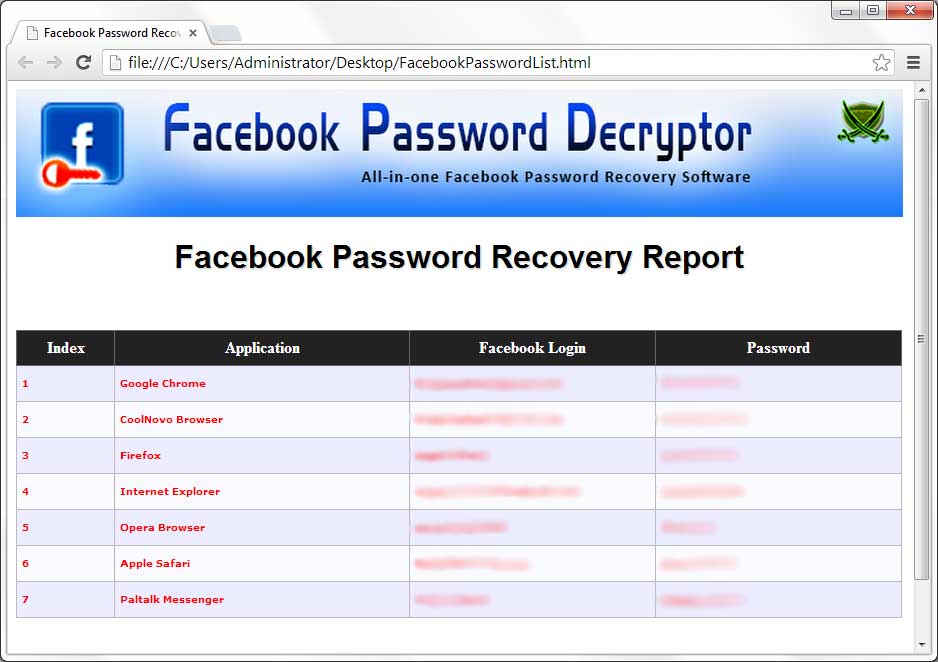

- HOW TO GET A LIST OF USERNAMES AND PASSWORDS FOR A SITE HOW TO
- HOW TO GET A LIST OF USERNAMES AND PASSWORDS FOR A SITE VERIFICATION
- HOW TO GET A LIST OF USERNAMES AND PASSWORDS FOR A SITE PASSWORD
- HOW TO GET A LIST OF USERNAMES AND PASSWORDS FOR A SITE OFFLINE
What if you already have a list of hashed passwords?


Similar protection measures to those described above against brute force attacks can prevent these types of attacks from being successful.
HOW TO GET A LIST OF USERNAMES AND PASSWORDS FOR A SITE PASSWORD
It is frequently successful because, often when people choose passwords, they choose common words or variations on those words (for example, 'password' or hacker might also use this type of attack when they know or guess a part of the password (for example, a dog's name, children's birthdays, or an anniversary - information a hacker can find on social media pages or other open source resources). This is usually faster than a brute force attack because the combinations of letters and numbers have already been computed, saving you time and computing power.īut if the password is sufficiently complex (for example 1098324ukjbfnsdfsnej) and doesn't appear in the 'dictionary' (the precompiled list of combinations you're working from), the attack won't work. How can you crack passwords faster?Ī dictionary attack involves trying to repeatedly login by trying a number of combinations included in a precompiled 'dictionary', or list of combinations.

HOW TO GET A LIST OF USERNAMES AND PASSWORDS FOR A SITE HOW TO
Here's an article on how to execute a brute force attack.
HOW TO GET A LIST OF USERNAMES AND PASSWORDS FOR A SITE VERIFICATION
They can also force a secondary method of verification like Captcha, or use 2 factor authentication (2FA) which requires a second code (SMS or email, app-based, or hardware key based). You can also use unique passwords for each account (use a password manager!) to reduce the danger from data breaches.Ī security team can lock out an account after a certain number of failed login attempts. First, you can use sufficiently long, complex passwords (at least 15 characters). This type of attack can be defended against in a couple of different ways. The more possible passwords there are, the harder it is for someone to successfully login with a brute force attack. When you add in uppercase letters, special characters, and numbers, this gets even more difficult and time consuming to crack. It becomes exponentially more difficult with a longer password because of the sheer number of possibilities.įor example, if you know that someone is using a 5 character long password, composed only of lowercase letters, the total number of possible passwords is 26^5 (26 possible letters to choose from for the first letter, 26 possible choices for the second letter, etc.), or 11,881,376 possible combinations.īut if someone is using an 11 character password, only of lowercase letters, the total number of possible passwords is 26 ^11, or 3,670,344,486,987,776 possible passwords. This is relatively easy with a short password. This is because a security team will probably notice many, many failed login accounts from the same account, but if you can crack the password offline, you won't have a record of failed login attempts.
HOW TO GET A LIST OF USERNAMES AND PASSWORDS FOR A SITE OFFLINE
Offline isn't always possible (it can be difficult to obtain a set of hashed passwords), but it is much less noisy. This can be done either online (so in real-time, by continually trying different username/password combinations on accounts like social media or banking sites) or offline (for example if you've obtained a set of hashed passwords and are trying to crack them offline). This type of attack involves repeatedly trying to login as a user by trying every possible letter, number, and character combination (using automated tools). Understanding how cybercriminals execute attacks is extremely important for understanding how to secure systems against those types of attacks.Īttempting to hack a system you do not own is likely illegal in your jurisdiction (plus hacking your own systems may violate any warranty for that product). A brief note - this article is about the theory of how to crack passwords.


 0 kommentar(er)
0 kommentar(er)
